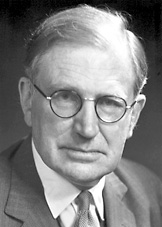Nevill Francis Mott facts for kids
Quick facts for kids
Sir Nevill Mott
|
|
|---|---|
 |
|
| Born |
Nevill Francis Mott
30 September 1905 Leeds, England
|
| Died | 8 August 1996 (aged 90) Milton Keynes, Buckinghamshire, England
|
| Alma mater | University of Cambridge |
| Known for |
|
| Awards |
|
| Scientific career | |
| Fields | Physics |
| Institutions | |
| Doctoral advisor | R.H. Fowler |
Sir Nevill Francis Mott (born September 30, 1905 – died August 8, 1996) was a famous British physicist. He won the Nobel Prize in Physics in 1977. He shared the award with Philip Warren Anderson and John Hasbrouck Van Vleck.
Mott's work focused on how electrons behave in different materials. He especially studied materials that are magnetic or have a messy, unorganized structure, like amorphous semiconductors. He helped explain why some materials can act like metals (let electricity pass through) and others act like insulators (block electricity).
Contents
Early Life and School
Nevill Mott was born in Leeds, England. He grew up in a village called Giggleswick. His father was a science teacher at a school there. His mother, who had studied math at Cambridge University, taught him at home for a while. Both of his parents had studied physics.
When he was ten, Nevill started going to a school called Clifton College in Bristol. After that, he went to St John's College, Cambridge, where he studied advanced mathematics.
A Career in Physics
After finishing his studies, Mott became a teacher at the University of Manchester in 1929. A year later, he returned to Cambridge as a Fellow and lecturer. In 1933, he moved to the University of Bristol. There, he became a professor of theoretical physics.
In 1948, he became the Director of the Physical Laboratory at Bristol. Later, in 1954, he was chosen to be the Cavendish Professor of Physics at Cambridge. This was a very important job, and he held it until 1971. He also led Gonville and Caius College, Cambridge from 1959 to 1966.
Early Research: Collisions and Metals
Mott's first research looked at how particles bump into each other in gases. He studied how electrons collide with hydrogen atoms. This work helped other scientists understand similar effects in metals.
He also started to study solid states (how atoms are arranged in solids). He wrote two important books about this. One book, written with H. Jones, explained how metals and alloys work. It described how electrons move freely in metals. This helped explain why certain metal mixtures are very stable.
Understanding Solids and Photography
Mott's second important book, written with Ronald Wilfred Gurney, explored the chemistry of solids. It explained how metals rust at low temperatures. It also looked at how light affects photographic film. His work helped explain how a hidden image forms on film when light hits it.
This research also led to new ideas about semiconductors. These are materials that can sometimes conduct electricity and sometimes not.
Discovering Dislocations
After World War II, Mott worked on understanding how materials break. He studied dislocations, which are tiny defects in the structure of crystals. He worked with other scientists like Frederick Charles Frank. Their research made Bristol a leading place for studying these defects.
Mott also thought a lot about how electrons interact with each other. He studied materials like nickel oxides. These materials can switch from being metals to being insulators under different conditions. This change is now known as the Mott transition. The term Mott insulator is also named after him.
Sharing Scientific Knowledge
Nevill Mott helped make the scientific journal Philosophical Magazine very popular. He made it a place for new ideas in solid state physics. When a paper was too long for this journal, Mott decided to create a new publication called Advances in Physics. Both journals are still used by scientists today.
Awards and Special Honors
In 1977, Nevill Mott received the Nobel Prize in Physics. He won it for his important ideas about how electrons behave in magnetic and disordered materials. He heard the news while having lunch in Germany!
Mott was elected a Fellow of the Royal Society (FRS) in 1936. This is a very high honor for scientists in the UK. He was also knighted in 1962, which means he was given the title "Sir."
He continued to work and contribute to science until he was about 90 years old. In 1995, he was made a Companion of Honour, another special award.
The Loughborough University still holds an annual lecture named after Sir Nevill Mott.
Personal Life
Nevill Mott was married to Ruth Eleanor Horder. They had two daughters, Elizabeth and Alice. He passed away in Milton Keynes on August 8, 1996, at the age of 90. He wrote a book about his life called A Life in Science.
See also
 In Spanish: Nevill Francis Mott para niños
In Spanish: Nevill Francis Mott para niños

